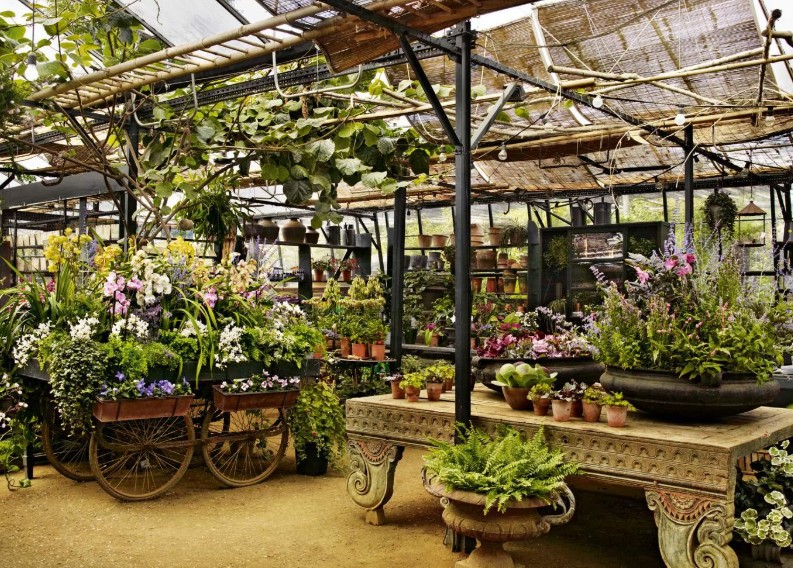Here’s Why The Real Estate News May Be Better Than You Think

Are we on the verge of another major real estate downturn? Two of America’s most notable real estate economists, Leslie Appleton-Young and John Tuccillo, weigh in with their predictions, and the news may be better than most people expect.
Are you receiving Inman’s Broker Edge? Make sure you’re subscribed here.
With all the headlines about a potential recession, soaring inflation, major interest rate hikes and the stock market sell-off, are we on the verge of another major real estate downturn? Two of America’s most notable real estate economists weigh in on what we can expect to happen, and the news may be better than most people expect.
Leslie Appleton Young, who recently retired after serving as chief economist for the California Association of Realtors, and John Tuccillo, the former chief economist for NAR and Florida Realtors, shared their take on what’s ahead economically for the real estate industry. They both agree that what is happening right now is unprecedented. Nevertheless, here’s their view on what’s ahead.
No stagflation given the current statistics
Appleton-Young doesn’t believe that we’re currently facing the threat of stagflation (a stalled economy coupled with high inflation).
She explains:
I have a hard time going back to the stagflation 1970s when I look at the labor market today, which is incredibly tight. We’re at 3.6 percent unemployment, which is only 0.1 percent higher than it was in February of 2020. How do you get a downturn big enough to put such a significant number of people out of work and that’s going to create this snowball going down into a recession? I’m just not seeing it, at least not yet.
Challenges abound. The shift from 2.7 percent mortgage rates to more than 5 percent will certainly have an impact on the real estate market. We see that happening already. The Fed’s objective to engineer a soft landing, dampening demand just enough to let the air out of the inflation bubble without pushing the economy into a prolonged recession, is not an easy one. The doomsayers are out in force. It’s important to put aside everyone’s opinions and recognize the strong underpinnings of the economy today.
She continued:
I mean, look at the real estate industry, all the technological innovation over for the last 30 years finally got implemented during COVID. Agents and consumers were forced to do things differently, and they did.
[In terms of working from home], it’s hard to overstate what a significant change that has made to the labor market, to how we live, up to expectations of employees and employers going forward. And I think for the most part, it’s been incredibly positive. I think we’re well-positioned for a lot of productivity and innovation going forward. So, I am not naive to the challenges and uncertainty ahead, but I am also not in the Chicken Little camp whatsoever.
Two reasons crashes occur
According to Tuccillo, crashes occur either because credit is loose or “the economy stinks.” Today it is much harder to get a mortgage than it was in 2000, which was a fairly normal year. Also, we have an employment deficit of about 2 million to 3 million unfilled jobs, (there are more jobs than there are people to fill them).
Furthermore, demand is still dramatically outpacing supply.
According to Tuccillo,
The challenge today is we have a tremendous amount of demand, which was fueled by government support payments and low interest rates. Homebuilding was wrecked between 2006 and 2008 and has never recovered.
The high level of demand is also being fueled by people who own properties and feel they have nowhere to go.
Because supply deficits are self-fulfilling, they are self-reinforcing. [Many owners] are sitting in their houses saying, ‘I’d like to move but I can’t possibly afford to move. With interest rates at 5.5 percent, housing prices have just run away from me, so I’m going to stay here.’ Those units are not going to come on the market.
The ‘dark underbelly of today’s market’
Appleton-Young weighed in on the issue of building generational wealth:
I think you’re really bringing up the dark underbelly of this market. The 15, 20, 25 percent appreciation over the last few years has made many homeowners equity rich. But this also means that homeownership is increasingly out of reach for the Gen Z’s and some of the millennials, in addition to the Black and Hispanic communities with historically low homeownership rates. [Appreciation] has been moving so rapidly, that even though we had good wage growth, the inflation rate has been even higher, so we’re really falling behind.
The impact of the ‘great relocation’
Appleton-Young and Tuccillo agree that one of the most significant pandemic-related changes is how many people can now work anywhere because their jobs are in their head, not in an office building.
The result has been a leveling of the housing market making it more homogeneous. To illustrate this point, the differences in unemployment rates across the states as well as housing price growth are not as huge as they once were.
Great advice for industry professionals
Tuccillo has this great advice for industry professionals:
There is no national housing market. There are hundreds of thousands of housing markets. It’s incumbent upon real estate practitioners to know the facts about their market, employment, who’s employing, who’s coming in, and who’s going out. They must track the demographics and track the employment to know really what’s going on.
And incidentally, they need to know where to advertise their services for people who are coming in. [For example], if I know that 25 percent of all in migrants to Bozeman, Montana, come from the Sacramento area, I’m going to build referral relationships in Sacramento. I’m going to make myself known in Sacramento so that I get [these buyers who are relocating] before they come.
What to expect as we look forward to the second half of 2022 and beyond
Here’s what Appleton-Young and Tuccillo say is ahead for our industry:
- The inflation rate will pull back. The inflation rate dropped from 8.5 percent in March to 8.3 percent in April. While this is still highly elevated, the supply bottlenecks are gradually working themselves out.
- Rates may increase more before they come back down and stabilize. We won’t see 3 percent mortgage rates any time soon because we have a significant inflation factor that will get better, but not quickly.
- Major wild cards continue to be the war in Ukraine, China’s lockdown and the ongoing energy supply problems. It will probably take at least two years before we get back to what had before this war.
- The New York Fed regularly surveys inflation expectations. What drives inflation is what people expect to happen. Based on the current surveys, people expect by the end of 2022 the inflation rate will 6.3 percent, down 2 percent from today, which is good news. Still, that’s way above the Fed target of 2 percent, which will probably induce the Fed to overreact.
- The three-year expectations based on the New York Fed survey had been relatively low for a while but are now slightly elevated at 3.9 percent, indicating some jitteriness among consumers.
- In terms of the Fed, there’s some support for revisiting the days of Paul Volcker. He sent interest rates and unemployment skyrocketing to fight inflation. There’s a price for pulling inflation down and the burden falls more on low- and moderate-income people, just as we saw during the pandemic. The Fed has a dual mandate of low prices and low unemployment, so it’s a balancing act.
- We will continue to see moderate growth and the unemployment rate will pretty much stay stabilized based on where it is now. We will also continue to see job growth over the rest of the year.
- In terms of interest rates, we expect the Fed to increase them to about 6 percent.
- There is a huge construction and labor supply bottleneck as well as the ongoing materials supply constraints causing the building industry to not keep pace with current demand. Local regulations are not getting any looser, so those constraints will continue to be with us for a while.
- While people may pull out of the market now due to the jump in interest rates, when the rates drop down so say about 4.5 percent, buyers will accept the reality and jump back in.
- Markets can turn on a dime or they can also do a slow squeeze. That’s one of the question marks we’re facing right now.
Final takeaways
Appleton-Young reiterated the importance of the housing market in building intergenerational wealth, saving and having a strong asset.
That goal is getting further and further away for many people in this market. We must get more people on the ladder to homeownership by building smaller and more affordable housing and loosening up on overly restrictive zoning.
Tuccillo’s final takeaway is that all market conditions may not be tumultuous:
But they will be very interesting. Over the next 18 months to two years, we’re not going to see a collapse. I don’t believe we will see stagflation. I just think that every day, there’ll be something else to worry us. And we’ll be worried, and the markets will be skittish, and the housing market will be skittish. But if you look at the underlying long-term trends and fundamentals, we’re fine.
Bernice Ross, president and CEO of BrokerageUP and RealEstateCoach.com, is a national speaker, author and trainer with more than 1,000 published articles. Learn about her broker/manager training programs designed for women, by women, at BrokerageUp.com and her new agent sales training at RealEstateCoach.com/newagent.







